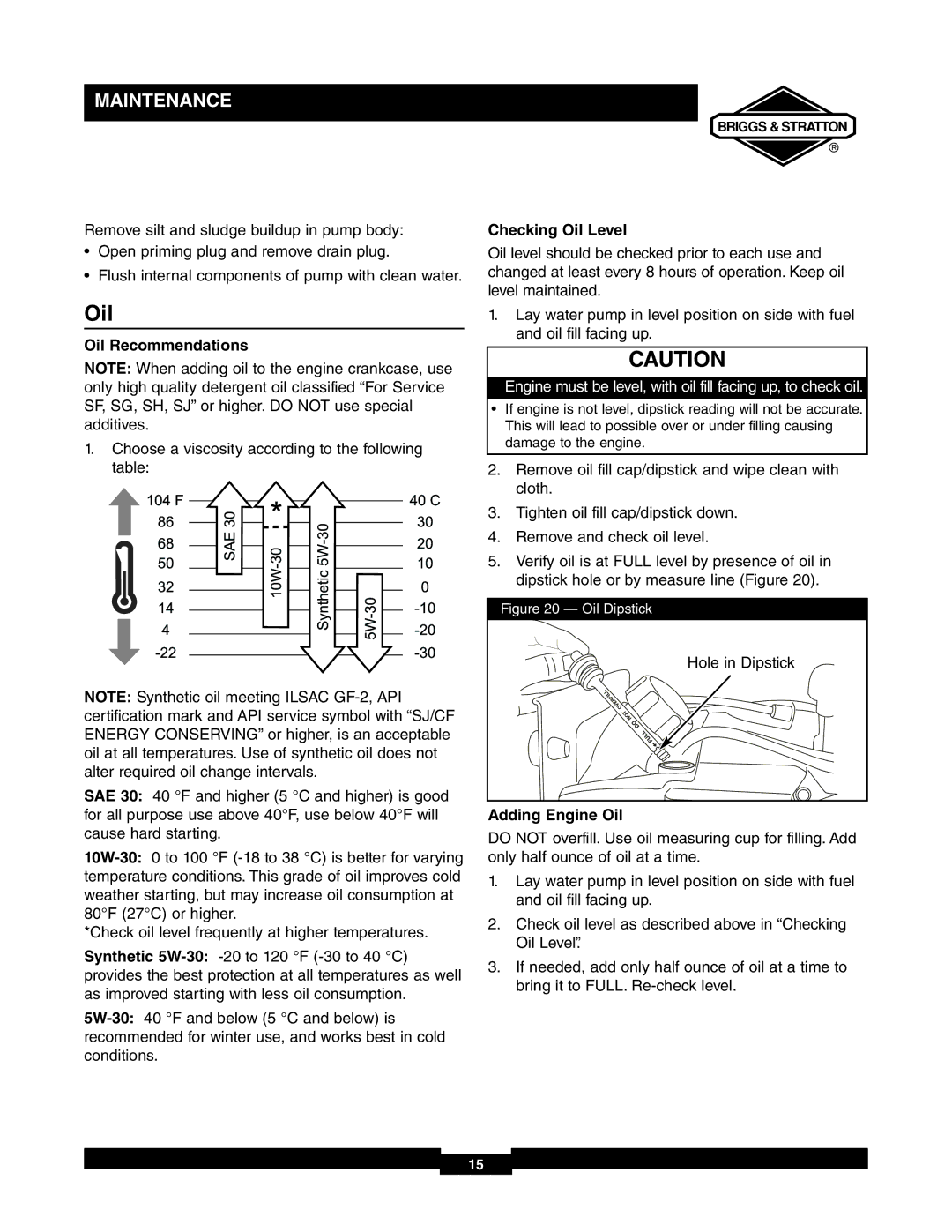073000 specifications
The Briggs & Stratton 073000 is a powerful and versatile small engine that caters to a wide range of outdoor applications, including lawn mowers, pressure washers, and various garden tools. Known for its reliability and efficiency, this engine has become a trusted choice for DIY enthusiasts and professional landscapers alike.One of the primary features of the Briggs & Stratton 073000 is its durable construction. Designed with robust materials, the engine can withstand the rigors of outdoor use, ensuring a long service life. The design includes a heavy-duty crankshaft and cast-iron cylinder sleeve, which contribute to its excellent performance and reduced wear over time.
Power output is a key characteristic of the 073000, providing ample torque to tackle tough tasks. The engine typically delivers around 6.75 to 7.25 foot-pounds of torque, making it suitable for various applications without compromising on performance. Moreover, its compact size allows for easy installation and adaptability to different types of equipment.
Another significant aspect of the Briggs & Stratton 073000 is its innovative technologies aimed at enhancing efficiency and user experience. The engine features an advanced air filtration system, which helps keep the internal components clean and reduces maintenance intervals. This ensures that the engine operates at peak performance for longer periods.
Starting the engine is made easy with the inclusion of a reliable recoil start mechanism. This system is designed for smooth operation, allowing users to start the engine effortlessly, even in challenging conditions. Additionally, the engine’s low oil shutdown technology helps protect it from damage by automatically shutting off when the oil level is low.
Another appealing characteristic is the engine's sound level. Briggs & Stratton has engineered the 073000 to operate quietly, significantly reducing noise pollution during operation. This feature is particularly advantageous for residential areas where noise restrictions may apply.
Overall, the Briggs & Stratton 073000 combines power, efficiency, and durability in a compact package. With features geared towards optimum performance and ease of use, this engine is an excellent choice for anyone looking to power their outdoor equipment reliably. Its reputation for quality and performance continues to make it a popular option among consumers and professionals alike.

